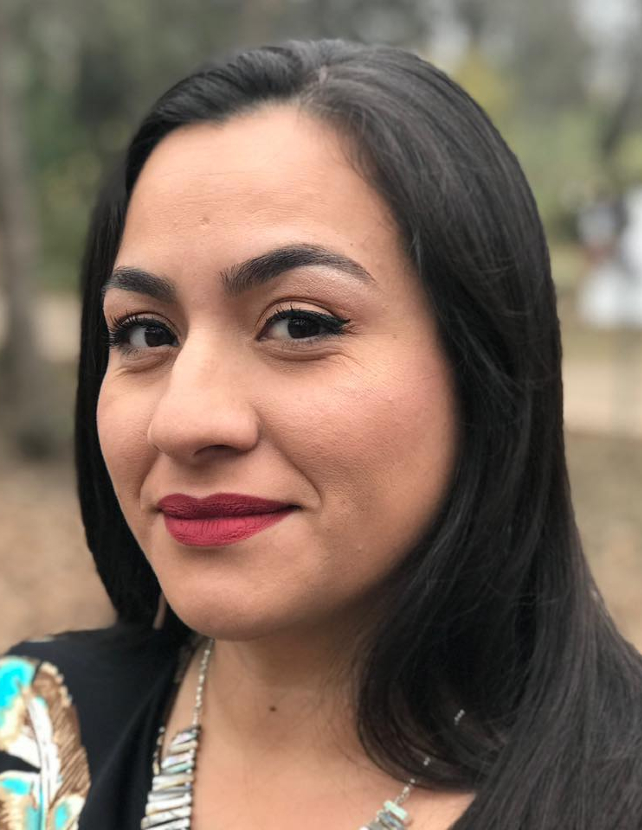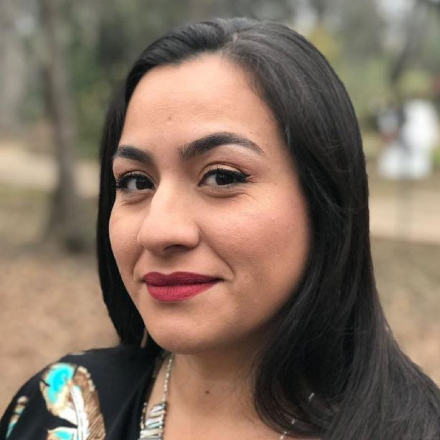Supporting Community-led, Culturally Resonant COVID Work in Native American Communities
Program
-
Focus Areas
Communicable Disease Prevention -
Issues
Population Health -
Expertise
Outreach & Dissemination -
Strategic Initiatives
COVID-19, Vaccine Access & Equity

Virginia Hedrick distinctly remembers the day in March 2020 when she returned home from a work trip to her family and friends panicking about the looming pandemic. As a Native public health professional, executive director of the California Consortium for Urban Indian Health (CCUIH), a statewide alliance of Urban Indian Health Organizations, and a concerned mother, she knew she had to do something to address people’s fears.
That very night she sat at her kitchen table and logged on for her first Facebook Live stream about COVID-19. She spoke calmly and clearly about flattening the curve, about hand washing, about the wait for more information. When that video quickly got over 5,000 views, she realized there was an information gap she and her organization had to fill, for Native folks, by Native folks.
In the American Indian and Alaska Native (AIAN) communities, the need for community-led, culturally-resonant outreach is particularly important, where a general distrust of government institutions and extreme social disparities have led to a perfect storm of disproportionately high COVID-19 infection and hospitalization rates, with lower numbers of vaccinations. Of the over 720,000 American Indians living in California, only 59.7% of that population have received at least one vaccination shot, compared to 77% of the overall California population with at least one dose.
Community-led Collaboration
After Virginia’s first successful Facebook Live stream, she started to receive messages from American Indians who had seen it across the country, from Alaska to Florida. The hunger for hearing information about COVID-19 directly from Native leaders was clear.
So the stream began to incorporate a regular guest appearance, bringing in an impressive roster of Native American experts and influencers to address misinformation, explain policy changes and share resources. The eclectic list included tribal leaders, a First Nations hip hop performer, Native American physicians, and even the former Director of the Indian Health Service. The videos continued to get thousands of views and were actively shared across the country.
The challenges of the pandemic also catalyzed a new level of collaboration among the wide range of Native-led organizations across California. Through Together Toward Health (TTH), a group of seven Native organizations meet monthly to share what has worked for their communities, create new projects, and to share resources. Recently, a rural Indian health organization brought up the need for mobile testing to better reach their dispersed residents. The team was able to quickly connect them with a fellow Native-led org also funded by TTH, the California Indian Manpower Consortium (CIMC), that was focused on mobile testing and had a team ready to travel wherever needed.

For deep historical reasons, our community is one of the hardest to reach and persuade to get vaccinated, so it’s very important to keep sharing trusted information and images through our own lens and our trusted sources.Virginia Hedrick, executive director, California Consortium for Urban Indian Health
Close and Constant Communication
CCUIH staff knew the strategies needed to reach urban California American Indians and change these statistics. Through over 15 years of serving their communities, they’ve learned that the best way to move the needle is to listen closely and communicate constantly, reflect and respect the culture, and bring community leaders together.
Public health practitioners often recommend keeping messages simple and not getting too detailed. But that approach doesn’t work for CCUIH’s communities. Because of the distrust of government authority, simple messages about something as important as health comes off as paternalistic at best.
“We have to be thorough and over-explain things, so that people really understand and build trust in us,” explains Virginia. CCUIH staff and partners spend a lot of time engaging folks in virtual Town Halls and Talking Circles, listening and sharing information on a weekly basis. From vaccine ingredients to personal experiences, staff and community members discuss the latest pandemic developments at length. “Even though it’s a virtual space, it’s a place of healing for our community, because gathering together gives us strength and is part of our tradition,” says Wyatt Kelly, the Public Health Coordinator at CCUIH and frequent convener of the community circles.
Respecting Culture
Ceremonies and rituals are a vital part of Native American culture. So CCUIH staff knew they had to figure out how to adapt and translate the public health recommendations for these critical elements of Native life. They continuously discussed with community elders about what was safe, including how to host Fiestas within the latest guidelines and if it was appropriate to gather again in sweat lodges. In one of the ceremonies that lasted for 10 days, CCUIH ensured that there was testing available in the space and advised the group to keep the invite hyper-local.
CCUIH also wanted to honor and reflect the beauty of American Indian and Alaska Native culture in all their materials, giving folks a sense of solidarity and ensuring they see themselves in the messages. The consortium brought in a California Indian artist-in-residence to develop all the artwork for their materials, incorporating traditional designs, Native-specific images and nods to cherished rituals.
Not only does the group support each other in response to the crisis, they also see the potential for the future. “TTH has added so much value by bringing us together, to be able to hear what folks are doing across the state, we’re learning from each other and problem-solving right away,” says Virginia. “Now we have to harness this moment, the resilience and strength that has emerged, to tackle the huge disparities in our communities that the pandemic really exposed.”
Read more about TTH’s work with Native communities on the TTH website.
Work With Us
You change the world. We do the rest. Explore fiscal sponsorship at PHI.
Support Us
Together, we can accelerate our response to public health’s most critical issues.
Find Employment
Begin your career at the Public Health Institute.
